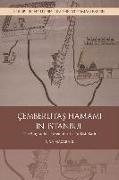Read more
Istanbul's Çemberlitas Hamami provides a case study for the cultural, social and economic functions of Turkish bathhouses over time
Bathhouses (hamams) play a prominent role in Turkish culture, because of their architectural value and social function as places of hygiene, relaxation and interaction. Continuously shaped by social and historical change, the life story of Mimar Sinan's Çemberlitas Hamami in Istanbul provides an important example: established in 1583/4, it was modernized during the Turkish Republic (since 1923) and is now a tourist attraction. As a social space shared by tourists and Turks, it is a critical site through which to investigate how global tourism affects local traditions and how places provide a nucleus of cultural belonging in a globalized world.
This original study, taking a biographical approach to tell the story of a Turkish bathhouse, contributes to the fields of Islamic, Ottoman and modern Turkish cultural, architectural, social and economic history.
Key Features
Weaves together Ottoman and modern Turkish architectural, cultural, social, economic and other strands of history in examining an important element of everyday life
Applies a biographical approach that presents a new paradigm for the discussion of architectural monuments, not only in an Ottoman context, but across time and space
Reconstructs the story of the hamam using architectural surveys, archival documents, media analysis and participant observation
Takes an experimental approach in terms of the organisation and presentation of Ottoman architectural history
Nina Macaraig is Visiting Associate Professor at Koç University, Istanbul and Visiting Assistant Professor at the University of California, Riverside. She is co-editor of
Istanbul and Water (2015) and editor of Bathing Culture of Anatolian Civilizations: Architecture, History and Imagination (2011).
List of contents
Preface
Acknowledgments
Note on Transliteration
List of Illustrations
List of Tables
Introduction
Chapter 1: Ancestry
The Patroness: Nurbanu Sultan
The Architect: Sinan
Origins
Chapter 2: Family
The Atik Valide Vakfi
The Atik Valide Mosque Complex
The Endowed Hamams
Chapter 3: From Birth to Breadwinner
The Birth
Getting Ready to Work
The Hamam's Employees
The Hamam's Customers
Making Money
Chapter 4: Impressions and Identities
A Place for Ritual Cleansing
A Place for Socialising
A Place for Carnal Pleasure
A Place for Healing
Pride of the City
Chapter 5: In Sickness and in Health
Symptoms: Evidence for Renovations
Causes: Fires, Earthquakes and Other Calamities
Treatment: Repair and Renovation Work
Chapter 6: Old Age
Renegotiating of Economic Family Relations: Double-Rent
Mutilation
A New Identity I: Emblem of Ottoman Heritage in the Nineteenth Century
A New Identity II: Emblem of Ottoman Heritage in the Early Republic
Survival
Chapter 7: Second Spring
A New Identity III: Tourist Attraction
A New Identity IV: Object of Ottomania
A New Identity V: The Managers' and Employee's Perspectives
A New Identity VI: The Digital Age
Epilogue
Appendix: Excerpts from the Endowment Deed of the Atik Valide Vakfi
References
Index
About the author
Nina Macaraig is Visiting Associate Professor at Koç University, Istanbul. She is co-editor of Istanbul and Water (2015) and editor of Bathing Culture of Anatolian Civilizations: Architecture, History and Imagination (2011).
Summary
This original study, taking a biographical approach to tell the story of a Turkish bathhouse, contributes to the fields of Islamic, Ottoman and modern Turkish cultural, architectural, social and economic history.

